FIRST and CPR (LEVEL C) COURSE
We’re offering another first aid and CPR course!
It will be presented by Emily Hunter Jan. 26/27th.
Price: $110
Check out the full details and register HERE.
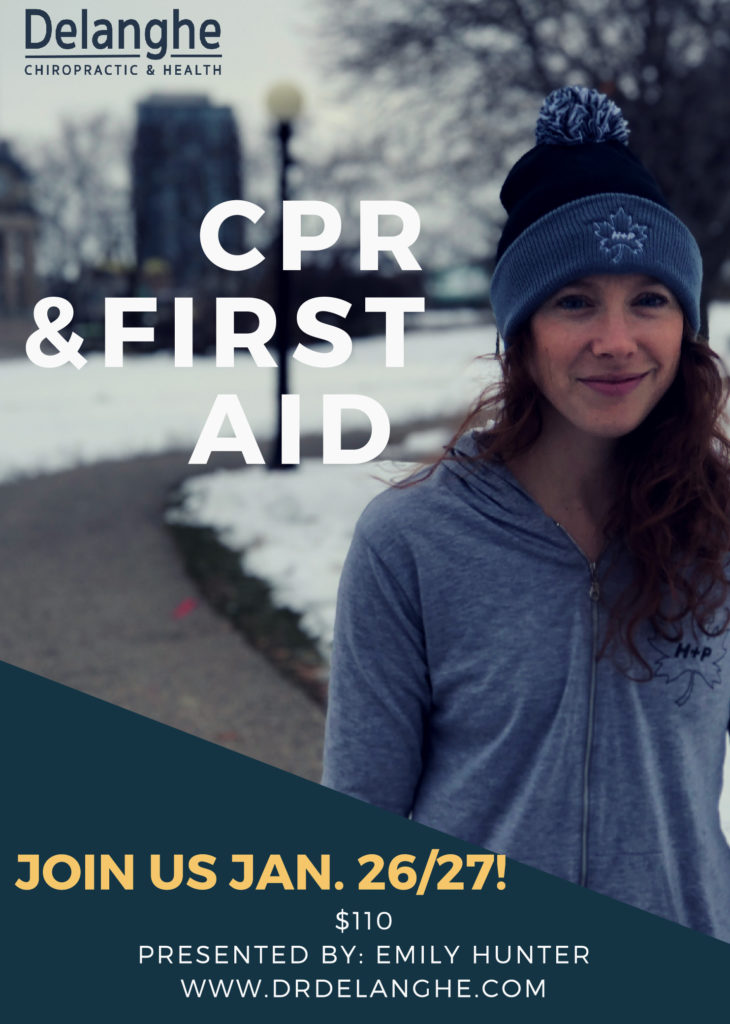
We’re offering another first aid and CPR course!
It will be presented by Emily Hunter Jan. 26/27th.
Price: $110
Check out the full details and register HERE.

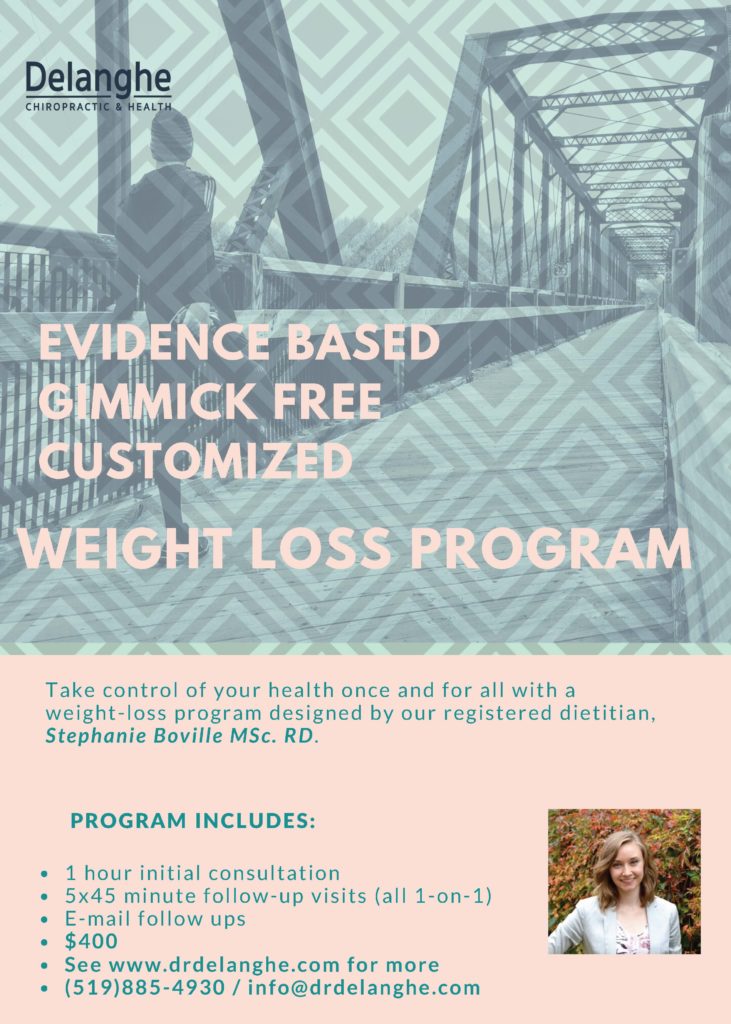
Let us help you take control of your health! Stephanie has 6 years of post-secondary education at her disposal. Learn more about her HERE. Along with adapting to each individual’s needs, each session will include the following topics (and more):
First visit: Initial assessment and diet optimization
Second visit: Science and role of carbohydrates and carbohydrate quality
Third visit: Quality fats, micronutrients and sleep optimization
Fourth visit: Intuitive eating and responding to hunger
Fifth visit: Planning and goal setting for transitioning out of dieting
Sixth visit: Wrap up and measurements
This plan will arm you with what the most up-to-date research shows works. No fad diets, fasting, cleanses, or cutting out foods you love. Stephanie will help you conquer your challenges not only from a dietary standpoint, but a biopyschosocial standpoint- your mind and behavior matters if this is going to work!
If you are interested for yourself or a loved one, please contact us at (519)885-4930 or info@drdelanghe.com.

Our clinic had a great time at the 2018 Fall 5K Classic! We had a huge group of runners out with our learn to run group who started from ground zero going all the way to running their first 5K ever (or at least first 5K in a long time).
It was amazing to see all of our teammates cross the finish line with a mix of smiles and exhaustion on their faces! Running a race for a beginner can be super daunting and intimidating task, but this crew banded together and conquered the challenge with hard work and positive attitudes from start-finish. For those who signed up with the team, our crew ended up averaging a very impressive time of 29:59! Not all of you appeared on this list for various reasons, sorry about that! Check out the full results HERE.

Here are some of our favourite pictures of the team from the event. You can check out our full album here.
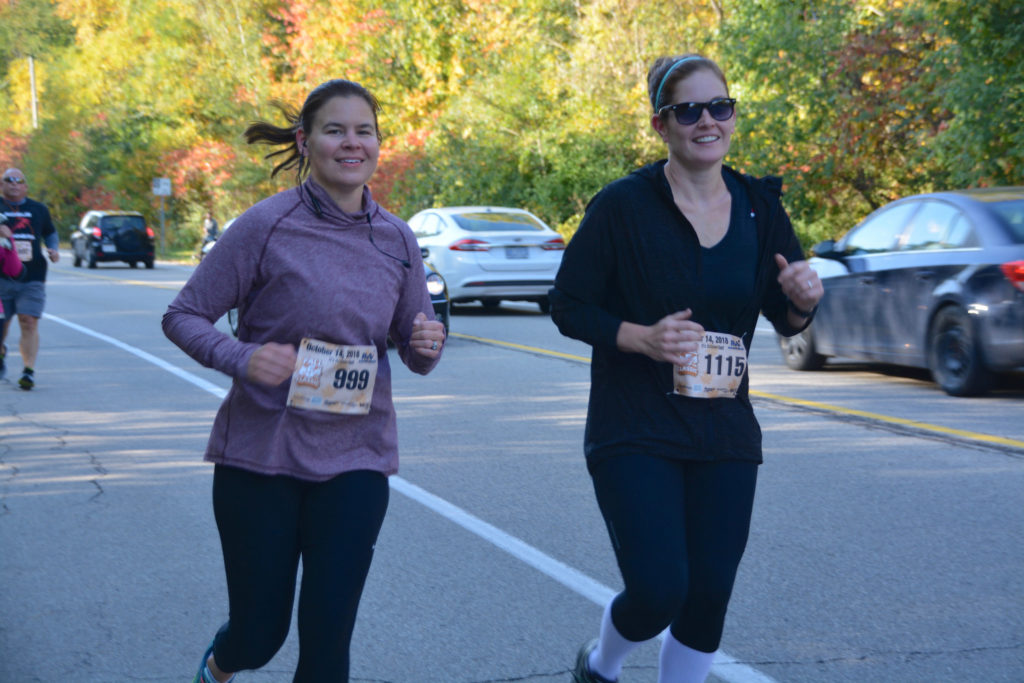
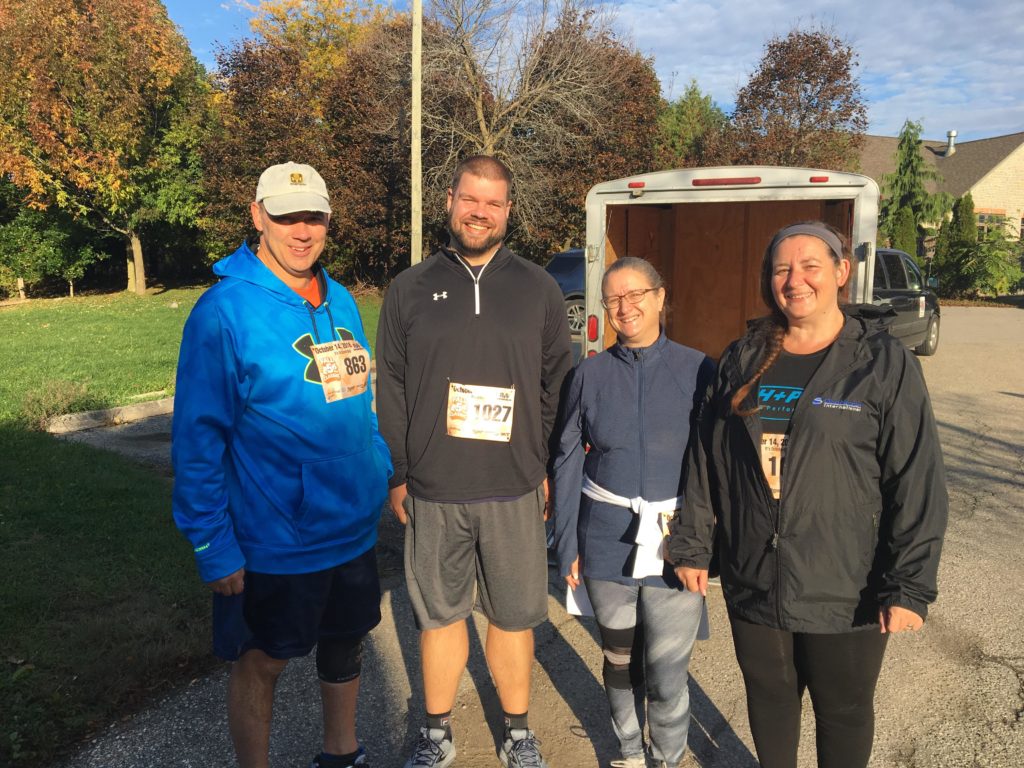
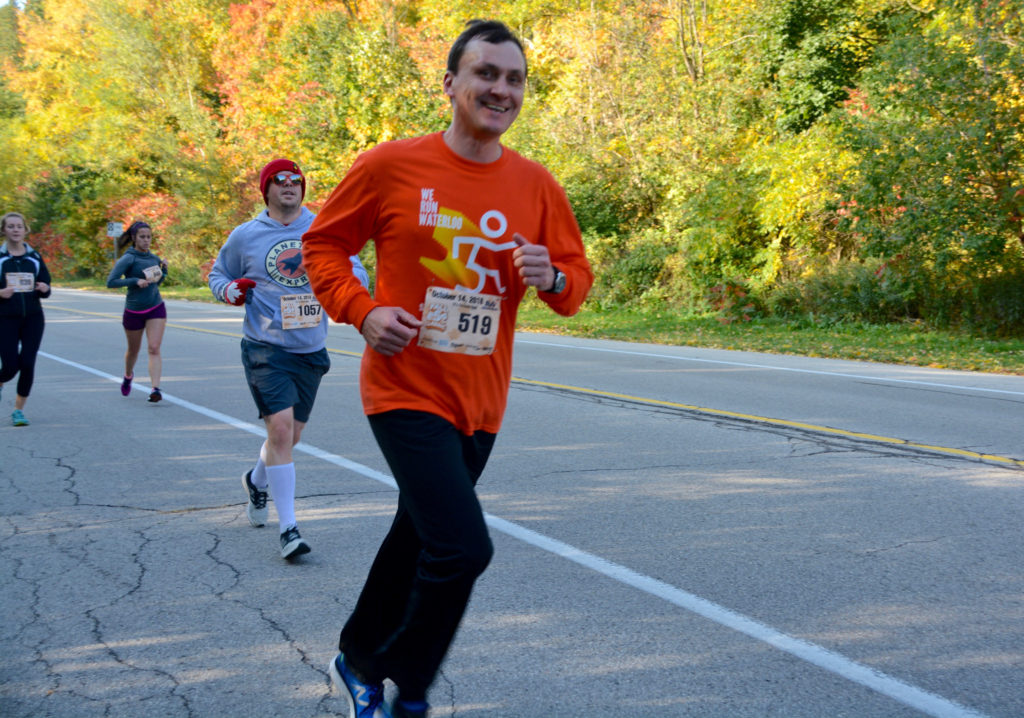
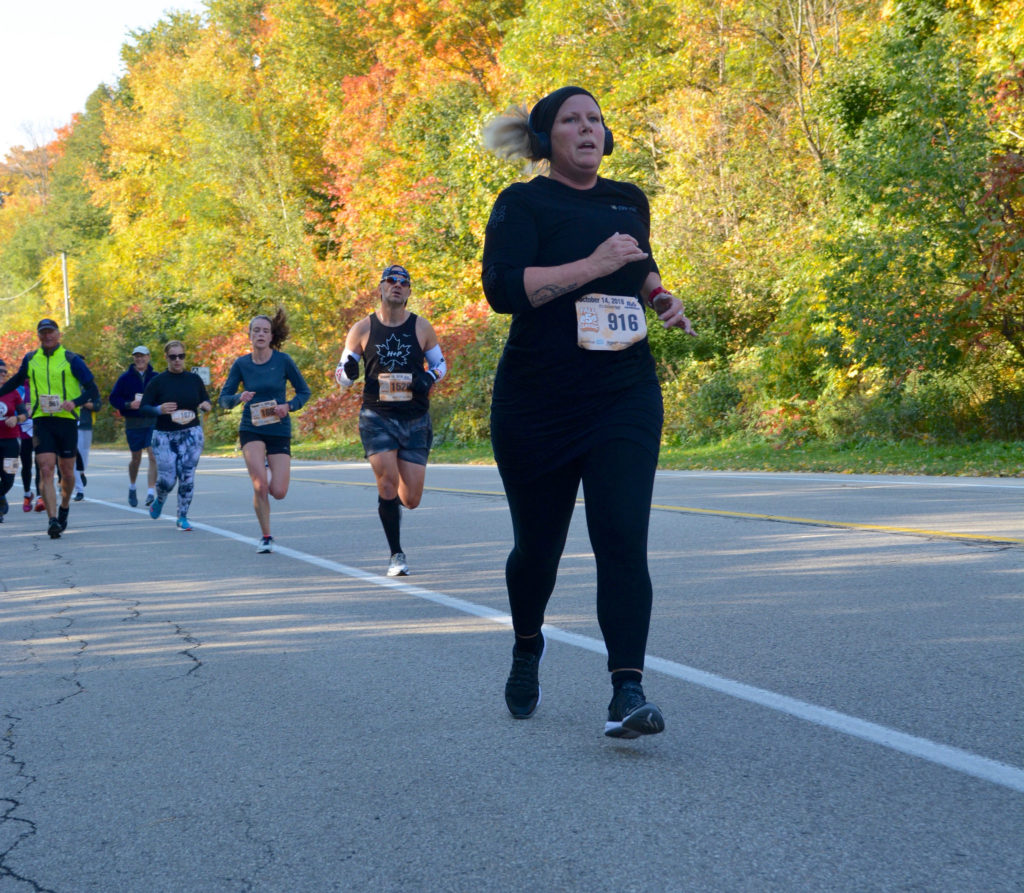
OH and HUGE bonus points goes to Mark for winning the coveted Run Waterloo quilt in his first race ever!

Our learn to run group runners weren’t the only ones active that day! Our practitioners and front desk crew all participated as well!
Our CPR instructor, Emily Hunter was in 1st for the team with a great time of 20:12!

Physio Kayla was in next for the team with a solid new personal best of 20:46!

Amanda had an awesome race! The only Olympic medalist to ever wear an H+P singlet, she ran a strong 25:45 in her first race of any type since her Olympic career and having two kids!
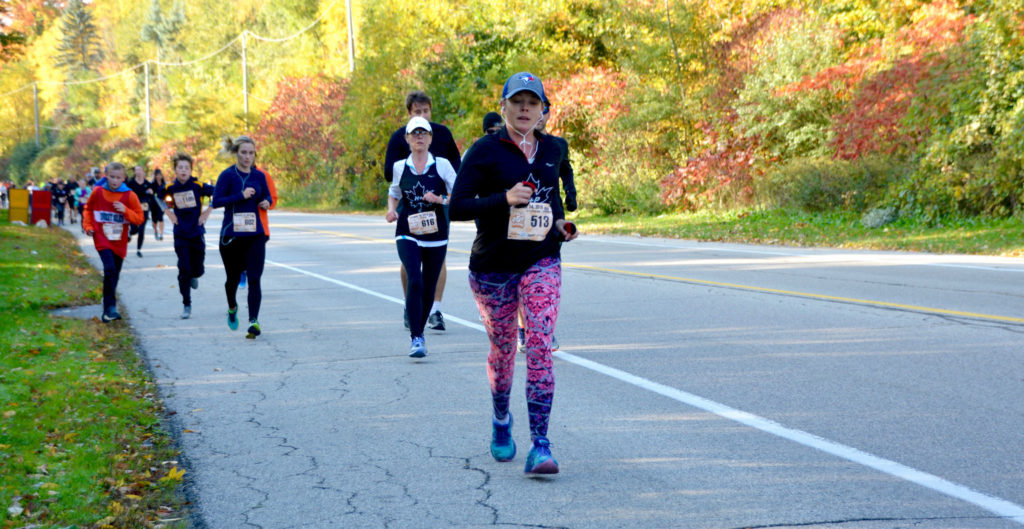
Sean ran with his mom, Gail, and she ran a new personal best of 26:04!

Our registered dietitian, Steph, had an awesome race running 31:24 despite being stopped by the traffic at Westmount/Erb!
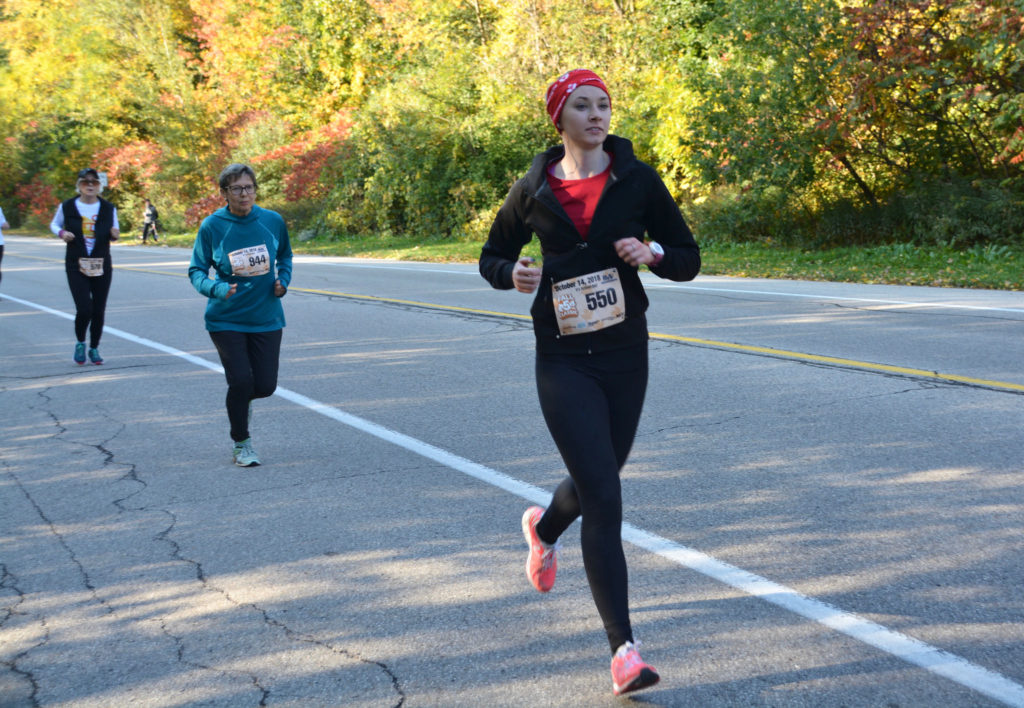
Karen had a great time with the squad as well and will be back for more next time!
Combined our employee team finished 3rd in the corporate competition with an average time of just over 22 minutes!
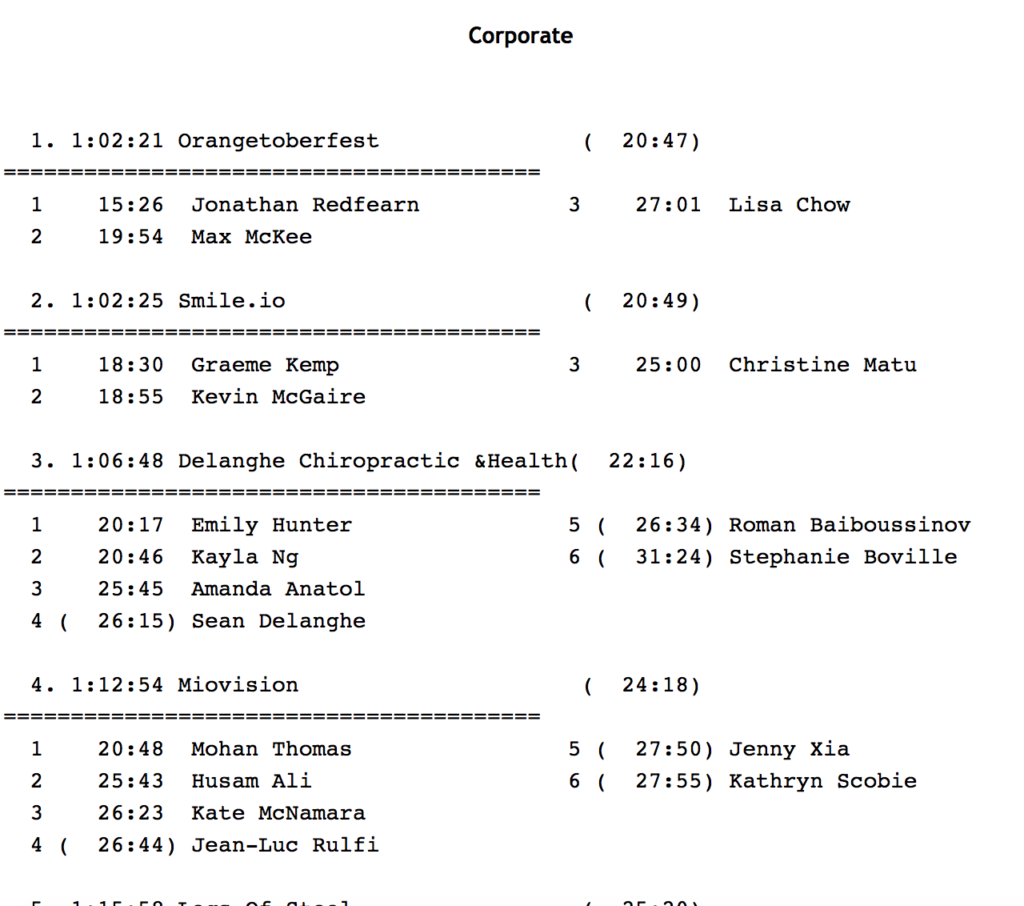
Thank you everybody for joining us on this journey, it was so much fun to do this as a team. See you out on the roads sometime soon!

In general, our society is becoming more health conscious, which is great! People are living longer and are looking to feel younger as they age. I often work with aging athletes, and older adults to help provide guidance on how they can use different nutrition strategies to help them reach their goals, whether health or fitness related. One of the most common issue these I find older adults face including recovery, strength and body composition changes. If you are over 50 I would encourage you to keep reading!
Sarcopenia
Sarcopinia is the term used to describe the gradual muscle mass loss seen in older adults. We know that in general once you hit age 50, you start to lose about 1% of your lean body mass per year. This is concerning for a few reasons. First, the loss of muscle mass means you will also likely lose functionality, ie you may be unable to lift groceries like you used to. It also can result in changes in balance and stability which may lead to increased risk of falls. Lastly, because our muscle mass is a metabolically active tissue (ie it stores and burns carbohydrates and fats) the decreased muscle mass can decrease the metabolic efficiency and storage of carbohydrates and fats and can lead to development of chronic diseases such as cardiovascular disease or type 2 diabetes. This results in a huge stress on our health care system and therefore is important for us to think about nutrition strategies to maintain our muscle mass as we age.
Why do we lose muscle mass?
It is not known for certain why we lose muscle mass as we age, whether we have a general decreased muscle building and/or increased muscle breakdown or a lower sensitivity for turning on protein synthesis (ie it takes more protein to increase muscle building). Either way, in general this leads us to have higher muscle breakdown than build up, and thus a loss of lean tissue.
What can we do about it?
The first point I want to make is not related to nutrition. It is well known that resistance training is a VERY powerful stimulus of muscle building capacity and aged muscles respond to resistance training similar to young muscles. Resistance training in combination with very easy nutrition changes can help retain, maintain and possibly even build muscle mass in older adults.
Nutrition Strategies
In a westernized country like Canada, we often get enough protein, however I do notice that older athletes or adults may still need to bump up their intake to maximize recovery. The reason for this recommendation is because we know that an older adult will not respond to a 20g dose of protein like a younger person would, and a higher dose of protein is needed to stimulate muscle building. Some older adults experience decreased appetite and will reduce portions, again we need to keep in mind we need more protein to maintain our muscle mass compared to when we were young!
Research does show that soy protein vs whey or beef protein is less effective to stimulate muscle building. Even though soy is a complete protein (has the same amino acid make up as meat) it seems as though it is processed slightly different in the body. Mainly, the protein in soy seems to be digested slower resulting in less of an increase in amino acid levels in the blood and thus decreased stimulation of muscle protein synthesis. Very careful nutrition planning is necessary if you are an older adult who adheres to a vegetarian or vegan diet.
Dairy has the amino acid Leucine, which is a branch chain amino acid. It is a potent stimulator of muscle synthesis and can assist in maintaining lean mass. Not only is dairy a source of leucine, but adding a glass of milk to your meal will add about 8g of protein, which actually could be all the changes you need to make to meet the protein needs at your breakfast, lunch and dinner. In addition, consuming dairy products will provide you with calcium and vitamin D to assist in prevention of osteoporosis! Win win right?!
We talked about the amount, quality and now we get to the timing! If we look at typical protein amounts at each meal of the general population, we typically consume very little protein at breakfast, moderate amounts at lunch and a HUGE portion at dinner. This is a very skewed distribution of your protein and very little protein synthesis occurs until the dinner time, where not all of that protein can even be used and is wasted. Having multiple doses throughout the day at regular time intervals is the best method of feeding and maintain your muscle mass. You also want to make sure you place your protein at appropriate times to ensure adequate recovery from exercise bouts.
If you are an older adult who is engaging in regular exercise, supplements like protein powder might be common place in your dietary plan. One other supplement that has been shown to have some benefits for older adults is creatine. First we must understand that lifting a weight for 8reps the activity is more intense and it lasts very little time and therefore it will use anaerobic metabolism for the most part, which means that you will be using the phosphocreatine pathway to provide energy along with carbohydrates. The theory is that the more creatine in the muscle, the harder you can train, thus getting a better workout and getting a larger response of muscle strength and growth. It can be used to stimulate your muscle building potential. Research does show that proper dietary strategies + weight training + creatine supplementation can result in additional muscle building, increased strength and also increase in functional movement. Proper dosing is needed to elicit results, and there are a few contraindications for using such a supplement, independent assessment for this supplementation is needed.
As our population ages, it is predicted that at year 2050 a quarter (25%) of the population will be over the age of 65. This may put strain on our health care system, and therefore we need to make sure we do as much as we can to keep our bodies healthy as we age. For more information about how you can keep your body healthy as you age, book an appointment today!

We are back at it again, and this time I want to talk a little bit about nutrition concerns for the male endurance athlete. If you have been following along with my previous blogs (if you haven’t, you should be!), you will recall we discussed how nutrition impacts the health and wellbeing of female endurance athletes, especially regarding stress fracture risk. You can find it here, if you would like to take a look back for a refresher.
For a quick recap, we discussed how endurance running is a huge metabolic demand, meaning it costs a lot to run fast for long periods of time. This can result in accidental under consumption of macronutrients (carbohydrates, fat and protein), energy, and ultimately vitamin/mineral intake, or purposeful restriction of food intake to achieve a desired level of thinness or body shape. Chronic under consumption, whether accidental or not, of both nutrient and energy, can cause some physiological changes in the body and can greatly increase your risk of bone related injuries.
It was typically believed that low energy availability (LEA), in the past known as the female athlete triad, only was a complication females encountered in sport, however it is now known that males also experience negative health and performance effects of LEA. It is possibly harder to detect in males, as there is no clear sign, such as loss of menstrual cycle, however that is why we need to be careful not to miss the subtle signs. In this article we will discuss what happens physiologically with LEA, and its effects on bone mineral density (BMD).
Physiological Changes
Under consuming energy can be a difficult concept to understand because calculations of exercise energy expenditure, basil metabolic rate and even energy intake are difficult to assess. Current research defines “Energy Availability” (EA) as the left over energy to be used for normal physiological processes after accounting for energy expenditure, which is expressed as kcal/kg of FAT FREE mass.
The EA equation= [energy intake- exercise energy expenditure] / fat free mass (kg)
Physiological Changes With LEA
– Decreased metabolic rate
– Increased cortisol (stress hormone)
– Decreased testosterone
– Signs include fatigue and decreased sex drive
Bone Mineral Density
There is ample evidence to suggest that an active individual have higher BMD than sedentary individuals. Within the athletic population swimmers and cyclists tend to have fairly low BMD due to non-weight bearing nature of the exercise. A study by Viner et al. looked at male and female cyclists with lower than expected BMD. The found that 70% had LEA across the entire training cycle, including pre season, competition and post season. This points to the theory that this particular group may have had low BMD due to their LEA. They found that 40% of the participants had low bone mineral density in their lumbar spine, and 10% had low bone mineral density in the femoral neck. The athletes were followed for 1 year and their BMD stayed the same, which is positive. The researchers pointed to their previous interventions of increasing vitamin D & calcium intake and including weight training as a reason for the maintenance of BMD. This provides evidence that a good nutrition and training intervention can help maintain bone strength.
Another study in elite male endurance athletes showed that LEA resulted in low testosterone (although not clinically low) however it did not result in any differences in BMD compared to those with normal testosterone levels. There seems to be a caloric value threshold before we start to see negative health and bone effects. Interestingly, it seems as though women are more sensitive to changes in EA, where we see significant and detrimental effects in heath and bone when their EA reaches 30 kcal/kgFFM/day or below. There is evidence that this occurs at levels of 20-25 kcal/kgFFM/day in a male athlete, although more research is needed to confirm this. This study suggested that because they investigated athletes at ~30kcal/kgFFM/day that this was not enough of a deficit to result in decreased BMD. However, this does not mean you can neglect your nutrition planning because even though their BMD did not change, those with low testosterone had 4.5x more risk of sustaining a stress fracture and had 4.5x more missed training days due to injury.
Main Take-Away:
In elite endurance athletes, 40% of males were found to have LEA. Even temporary low EA increases bone breakdown and decreases bone building, and chronic low EA has long lasting effects on bone health plus many more effects such as mental health and performance to name a few. Therefore, it is essential to stay on top of your nutrition as a part of stress fracture/injury risk reduction.
1. Negative energy balance and testosterone: studies show low testosterone results in 4.5x higher risk of bone injury and had 4.5x more missed training days due to injury
2. NFL players and vitamin D: In NFL players, low circulating vitamin D levels correlated with increased risk of core and lower muscle injuries; players with 1+ fractures had higher rates of inadequate levels of circulating vitamin D.
3. Military recruits with lower serum Vitamin D- correlated with higher risk of fractures
References:
Viner RT, Harris M, Berning JR, Meyer NL. Energy availability and dietary patterns of adult make and female competitive cyclists with lower than expected bone mineral density. International Journal of Sports Nutrition and Exercise Metabolism. 2015. 25, 594-602.
Ruohola JP, Laaksi I, Ylikomi T, Haataja R, Mattila VM, Sahi T, Tuohimaa P, Pihlajamaki H. Association between serum 20(OH)D concentration and bone stress fractures in Finnish young men. Journal of Bone and Mineral Research. 2006. 21, 1483-1488.
Heikura IA, Uuitalo ALT, Stellingwerff T, Bergland D, Mero AA, Burke LM. 2017. Low energy availability is difficult to assess but outcomes have a large impact on bone injury rates in elite distance athletes. International Journal of Sport Nutrition and Exercise Metabolism.
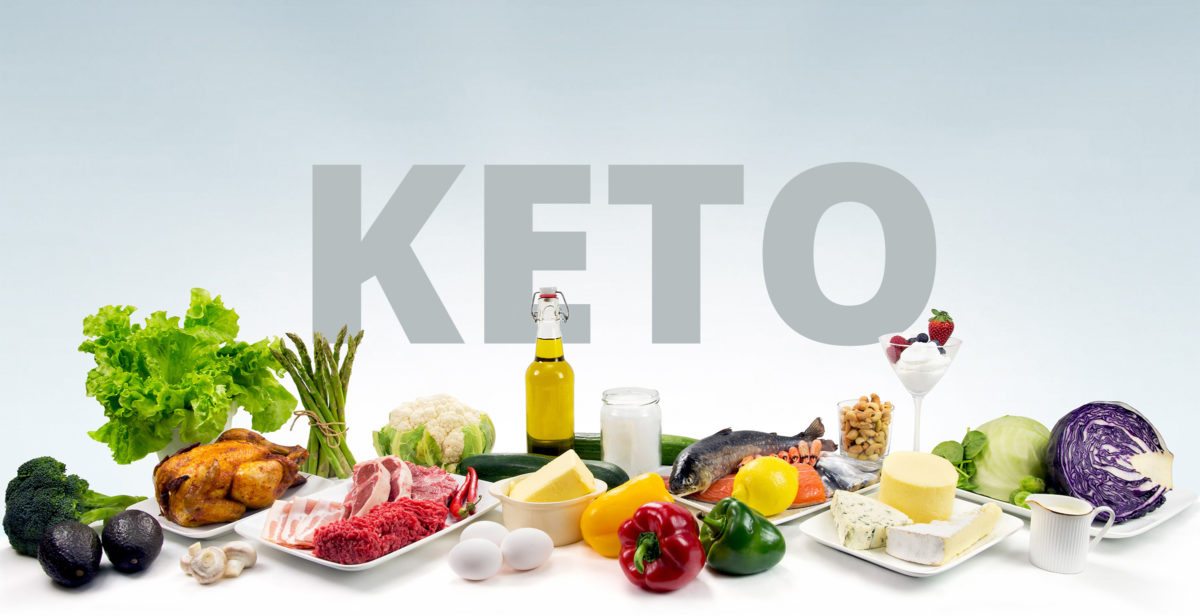
If you have been following along in my past articles, you saw the evidence for whether or not a keto diet is beneficial for endurance athletes. However, I wanted to also share my thoughts and some research on the keto diet for my non-athlete readers. In this article I will discuss why keto may, or may not, be a good choice for you.
First off, I want to say that keto is likely not meant to be a life-time eating style.
Typically for weight loss, keto could be used for 2-4 months and then one could switch into a long term maintenance phase where you are including healthy carbohydrates.
Secondly there are some warnings that come with the keto diet. Our brains and hearts run exclusively on carbohydrates and when we severely restrict carbs, our body needs to switch to the use of ketones for fuel instead. There is a 3-4 day period of “brain fog” when you initially switch to a keto diet, where your ability to think is reduced. Not to mention food selection is quite limited and your social life may take a hit due to your restrictions. Plus, fair warning, your breath will smell bad too!
There are risks!
Very close monitoring is required for implementing a keto diet (especially to assess if keto would be a benefit to you). You also have to have a solid plan for transitioning into a regular diet, which should also be lead by a dietitian or qualified health care professional. The latter is quite important. This is because when you starve yourself of carbohydrates and then suddenly reintroduce a large load of carbohydrates, the body switches to an anabolic (or build up) mode and causes increased insulin, increased uptake of carbohydrates into the cells, increased utilization of those carbohydrates, all which increases the uptake and use of potassium, magnesium, phosphate, thiamine and increased sodium and water retention. The sudden changes in these electrolytes and vitamins can cause serious issues that can be as severe as a heart attack. AKA you can not have a cheat day in a keto diet and have yourself a big old piece of cake.
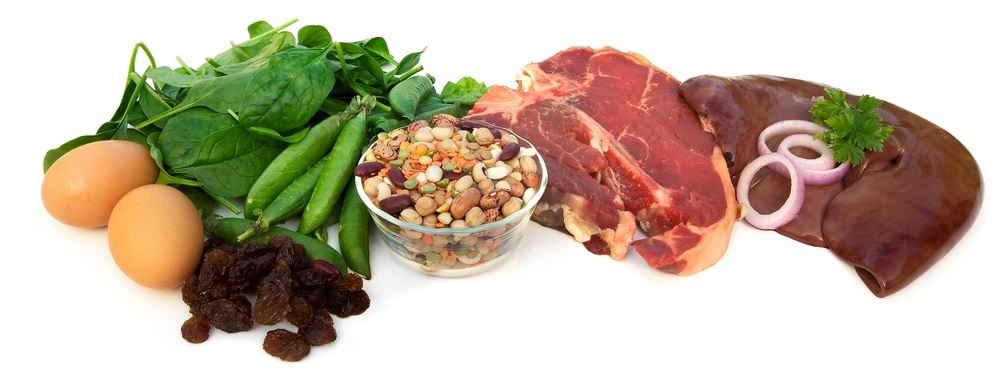
Keto & weight loss
Most of the research as a whole shows that you MAY lose more weight on a keto diet vs. regular diet. However, when studies include body composition analysis they show that on average keto leads to more overall weight loss, but the amount of fat lost is the same. This means that keto diets lead to more muscle mass loss compared to a traditional diet.
Therefore, you may see a better outcome when you step on the scale but it may have less desirable body composition changes.
The main reason for this finding is that you have to have a moderate protein intake while on a keto diet because protein can be used in a process called gluconeogenesis, where amino acids are (inefficiently) used to make glucose, thus keeping you out of ketosis, where as a traditional weight loss diet will be higher in protein to support the muscle mass retention. Other reasons could also include you can not have dairy, which has been shown to be an important food group to stimulate weight loss and muscle mass retention due to its leucine content.
It is also important to note that resistance exercise is a VERY powerful stimulus of muscle protein synthesis and muscle retention during weight loss, and regardless of diet should be included in your weight loss plan.
There may be benefits too
Keto may work for certain people. For instance, people who are on a keto diet often feel more satisfied with their diets. This is likely because higher fat foods are often pleasurable foods and provide flavour and mouth-feel to food (ie cheese, who doesn’t want to eat a brick of cheese every day!). Johnstone et al. (2008) conducted a study where participants were able to eat ad libitum (ie no restrictions or standards for caloric consumption) and participants were assigned to a keto group or a moderate carbohydrate group. They found that people on a keto diet felt less hungry, and lead to them eating less than compared to a moderate carbohydrate diet.
To my surprise, keto does seem to have a beneficial effect on decreasing blood glucose and HbA1c levels, decrease triglyceride levels, LDL cholesterol, and may increase HDL cholesterol levels. One thing I think is important to remember here is that in most cases, healthy dietary changes (ie more vegetables, fibre, less processed carbohydrates and sweets etc.), decreasing alcohol consumption, and increasing exercise can do the same for you, without doing something as intense or dramatic as a keto diet.
Take home:
My personal and professional opinion on this is that I would first have someone try a to make healthy diet changes which would include consuming good sources of carbohydrates such as beans, lentils and whole grains before trying a keto diet. Keto in my mind is a last ditch effort if no other dietary interventions have worked.
Summary:
I hope you found this helpful, this is not a full list of keto uses and I did not list all the pros and cons for you, as I wanted to keep this conversation relatively short. If you have any further questions about dietary interventions for building a healthier you, please feel free to come in for a visit. To learn more about me, you can find my bio here.
Reference:
Johnstone AM, Horgan GW, Murison SD, Bremner DM, Lobley GE. 2008. Effects of a high-protein diet on hunger, appetite and weight loss in obese men feeding ad libitum. Am J Clin Nutr. 87, 44–55.

Here at Delanghe Chiropractic & Health we are really excited to be leading our first beginner run program!
Date: Starts Sept 4th, 2018
Price: FREE
The idea is simple:
Every week, you will tackle a progressive plan that will take you from zero all the way to 5K in 6 weeks!
Each week will also include an information session from trained medical professionals. Your coaching team includes:
Together, we will be tackling the VERY fast and fun course at the Run Waterloo Fall 5K Classic.

Afraid you won’t be able to do it? Don’t be! Both Karen (mom of 4, new to running) AND Amanda (Olympic medalist, but now busy mom of two) of Delanghe Chiropractic will be starting from scratch and going through the plan with you!
Oh, and did we mention it is FREE? Join us, have some fun, and reach your fall fitness goals! You can register HERE or by e-mailing info@drdelanghe.com or calling (519)885-4930
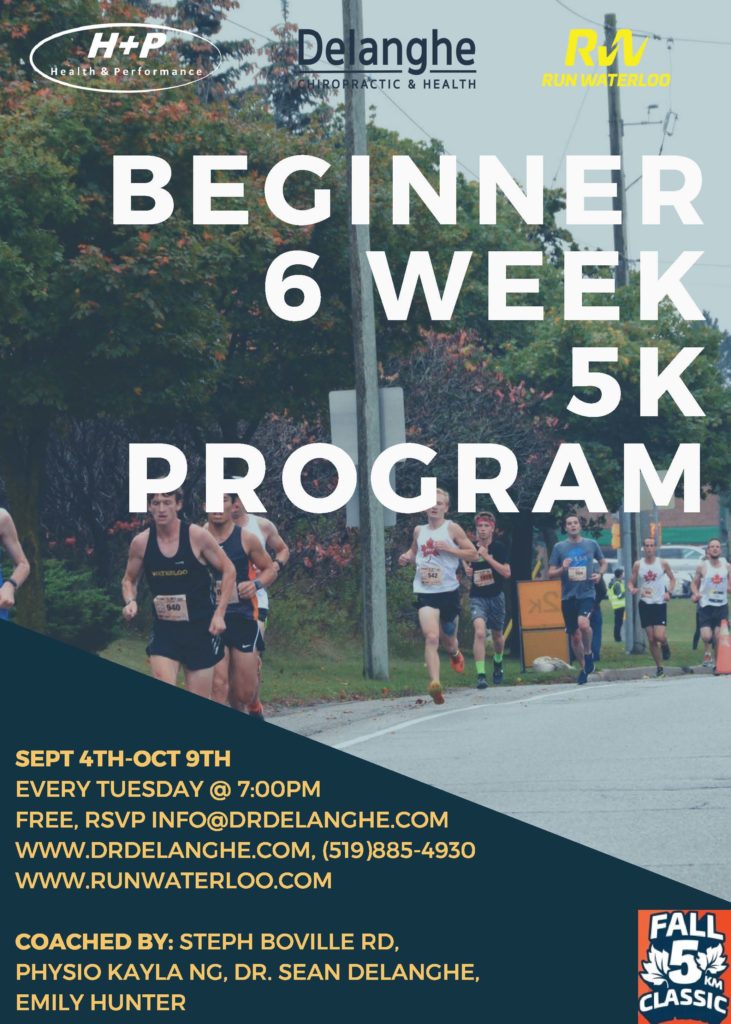

We’ve all heard of DOMS (delayed onset muscle soreness) and the majority of us have experienced it at least once.
It’s that muscle pain and weakness that we feel a day or two after some exercise. It can be caused by any type of muscle contraction but it is most commonly caused by an eccentric exercise such as downhill running and resistance training. (Reminder: an eccentric exercise is a movement where the muscle is under load as it lengthens. For example, a raising part of a bicep curl is a concentric exercise but the lowering part of a bicep curl is the eccentric part)
The typical symptoms include strength loss, pain, muscle tenderness, stiffness and swelling. Symptoms typically peak 24-48 hours after exercise and fade within 96 hours. The severity of DOMS depends on several factors but in general, more damage occurs with higher intensity and unfamiliar actions.
Physiologists do not have clear understanding of the mechanism behind DOMS, however the proposed theory involves a mechanical disruption to the sarcomeres (the fundamental unit of a muscle structure) which then sets off an inflammatory response. The swelling is caused from the movement of cells and fluid from the blood stream to the muscle, where it contributes to the sensation of pain.
I’ve often been asked if it’s okay to continue exercising and/or what can someone do to help reduce the feeling of DOMS. A recent meta-analysis looked to compare the effects of the most commonly used recovery techniques on muscle damage, DOMS, inflammation and the feeling of fatigue from physical exercise. The authors looked at the effects of 1 session of several different types of recovery techniques after physical exercise on:
Let’s have a look at the evidence!
Massage
Based on this meta-analysis, massage was the most effective for DOMS and perceived fatigue! The authors reported that a 20-30 min massage performed immediately after or up to 2 hours after exercise has been shown to help reduce DOMS for 24-96 hours after exercise. Elite athletes (in this case ultra-marathon runners) reported a significant improvement in lower perceived pain after massage. Not only does a massage feel good, but it has also been shown to reduce CK and IL-6 in the blood after exercise which may help towards a faster recovery.
Rationale:
Massage seems to help the symptoms of exercise-induced muscle damage by increasing blood and lymph flow which can stop the CK response and clear it from the blood. It’s assumed that massage flushes out neutrophils (an immune cell that responds to inflammation) from the damaged area which would otherwise cause more CK in the area.
Compression Garments
Compression garments have a significant and positive impact on DOMS up to 96 hours after exercise. It has been shown that wearing a whole-body compression garment over a 24-h period after intense heavy resistance training significantly reduces perceived fatigue. That might not be realistic for us but other compression garments such as leggings and socks can be used.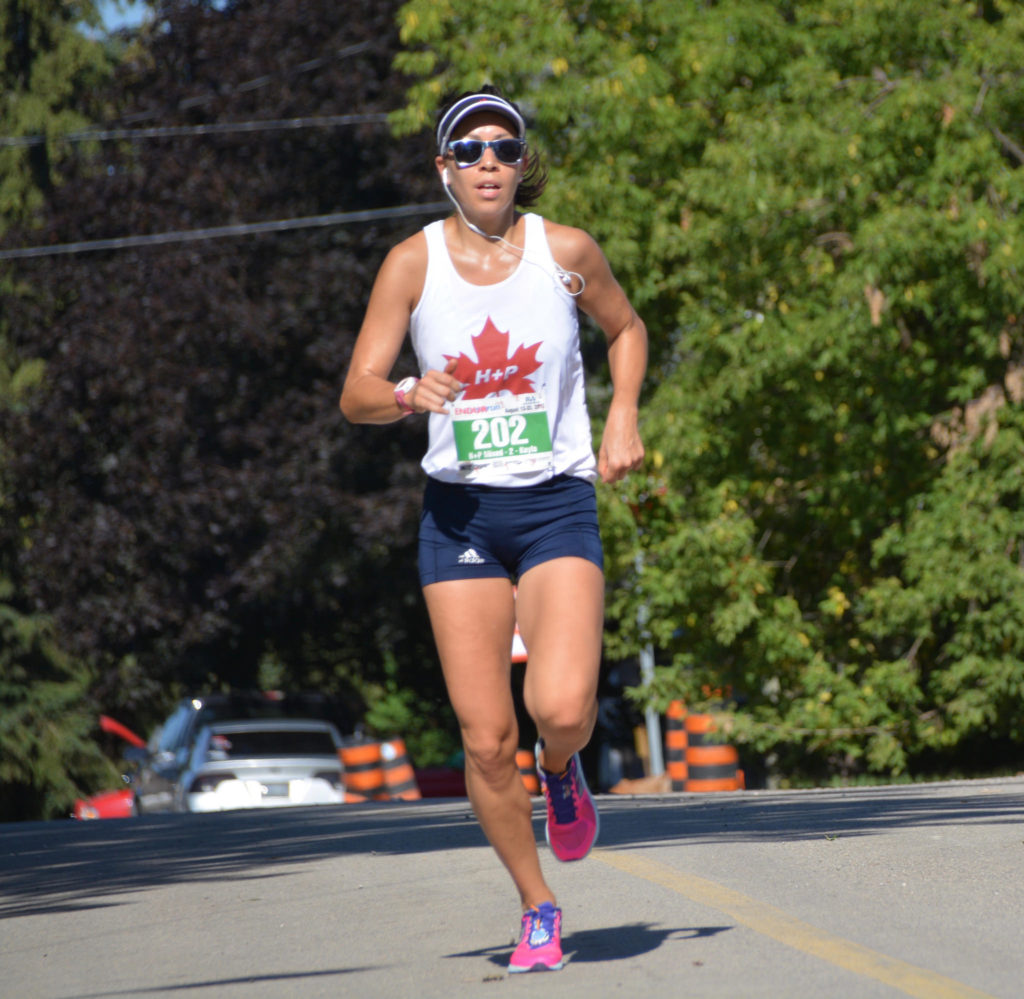
Rationale:
The beneficial effect of compression garments might be explained by:
Cold Water Immersion
Cold water immersion (CWI), aka: ice baths, showed a significant effect on DOMS and perceived fatigue after training and competitions/tournaments as well as after strenuous exercise in both trained athletes and recreational subjects.
Ice baths in water at 11-15⁰C for 11-15 minutes is considered the optimal dose to have a positive impact and reduce DOMS.
Rationale:
CWI seems to help reduce exercise-induced inflammation, edema, pain sensation, and muscle damage through these ways:
Contrast Water Therapy
Contrast Water Therapy (CWT) which is bathing alternately in warm and cold water seems to have a small effect on DOMS but not perceived fatigue. CWT has been able to reduce the perception of pain at 24, 48, and 72 hours post-eccentric exercise. CWT also reduced CK concentrations in the blood.
Rationale:
CWT promotes the opening and narrowing opening of blood vessels which may reduce the formation of edema, inflammatory pathways and decrease feeling of pain.
Active Recovery
Active recovery also has a significant effect on DOMS, but not effect on perceived fatigue however, the impact of active recovery is only significant during a short period after exercise. There seems to be no influence of active recovery on CK, IL-6 and CRP concentrations in the blood.
Rationale:
Active recovery seems to help DOMS by enhancing blood flow in muscle tissue, which helps to remove metabolic waste and therefore reduce muscle pain.
Cryotherapy
Cryotherapy is the exposure to a cold chamber and appears to be effective in reducing DOMS after exercise. The authors found that cryotherapy had an effect on DOMS but only for about up to 6 hours after exercise and any cryotherapy done 24 hours after the end of exercise is ineffective in alleviating DOMS.
Stretching/Electrostimulation
The meta-analysis did not find any significant influence of stretching or electrostimulation on DOMS and fatigue. In fact, results showed that stretching less than 6 hours after exercise might even produce DOMS.
Take Home Points!
At some point we will experience DOMS and with time, it will go away on its own but there are some ways to help reduce the feeling and possibly recover faster. Massage seems to be the most effective in relieving DOMS and fatigue. Ice baths and compression garments can also help but are less effective.
Keep in mind that the outcomes from this meta-analysis looked at many studies with different protocols and the results can vary depending on many things such as the type of exercise, level of immersion in water, and amount of pressure from compression garments to name a few.
One final note is that while research shows that these post-workout techniques can make us feel better faster, over time we might we lose some of the benefit from that hard workout or training session since the signal to adapt to the training is blunted from using these recovery methods. So, it is important to use them strategically (ie: after a race where you went too hard or leading into a big race) and to avoid using them during base training and instead just give yourself more time to recover.
Hope this helps with your recovery! If you have any other questions, or would like to learn more about me, check out my profile HERE.
References:
Dupay et al. An evidence-based approach for choosing post-exercise recovery techniques to reduce markers of muscle damage, soreness, fatigue, and inflammation: a systematic review with meta-analysis. Frontiers in Physiology. 2018
Connolly et al. Treatment and prevention of delayed onset muscle soreness. Journal of Strength and Conditioning Research. 2003

Are you a constant sufferer of stress related bone injuries? An endurance athlete? Female?
There are many different contributing factors of stress fractures in endurance athletes. Overcoming these challenges and working toward the prevention of these injuries is so important in order to continue with our training and competition schedule. In this article ,I will discuss why female endurance runners are more susceptible to these injuries along with some modifiable risk factors (i.e. nutrition interventions) that can be manipulated to reduce your risk of suffering one!
(Men, I did not forget about you. Stay tuned for an article on stress fractures in male endurance athletes!)
Possible Reasons for Stress Fractures
There are many endurance athlete-specific reasons why stress fractures may occur. One reason for this is the fact that distance running has a high metabolic demand. It costs a lot of energy to run fast for long periods of time and thus increases our need for a higher caloric intake. This can put us at risk if we are inadvertently under consuming calories. Inadequate food intake including both overall energy and micronutrient intake, can play a role in increasing our risk of fractures.
Excessive negative energy balance aside, runners seem to be especially at risk compared to other endurance athletes who also consume lots of calories. Although running does indeed increase bone mineral density (bone strength) with the proper balance of training and recovery, the repetitive nature of high-volume running often leads to the athletes not taking adequate rest days and/or programming in periodized reduced training weeks. This can lead to insufficient recovery and healing of the bone in between bouts of stress and therefore not enough time for the bone to adapt and become stronger. I would refer you to my colleagues, Dr. Sean and Kayla Ng, at the clinic to find out more about how to structure your training schedule.
 On top of inadvertent negative energy balances and insufficient recovery, some endurance athletes neglect the inclusion of a strength program into their training schedule. Lifting will act as a stimulus to increase bone mineral density. Not only this, but strength training can also aid in enhancing hours muscles ability to direct forces optimally through bones (i.e. compressive vs. sheer forces). For more on this, again I would encourage you to discuss this with my colleagues Dr. Sean and Kayla Ng.
On top of inadvertent negative energy balances and insufficient recovery, some endurance athletes neglect the inclusion of a strength program into their training schedule. Lifting will act as a stimulus to increase bone mineral density. Not only this, but strength training can also aid in enhancing hours muscles ability to direct forces optimally through bones (i.e. compressive vs. sheer forces). For more on this, again I would encourage you to discuss this with my colleagues Dr. Sean and Kayla Ng.
Another risk factor is related to how in some circles, runners are often pressured to fit into the very thin and light body category. First off, low BMI or low weight in itself can be correlated with low bone mineral density. In addition, if that low weight is combined with weight loss efforts and low energy intake, this can wreak havoc on your bone health due to hormonal changes (i.e. decreased estrogen production) and resulting menstrual dysfunction (which can act as an early sign that your are consuming insufficient calories).
BUT, all is not lost! There is a lot we can do to overcome our bone health challenges. Nutrition, for one, is an easily modifiable risk factor that can have positive outcomes for our bone health.
Nutrition & Bone Related Injuries
To put the need for proper nutrition in maintaining bone health in perspective, here are the results of 3 interesting and very applicable studies on the topic:
Practical Applications:
So, here’s what you can do:
I hope these statistics and general tips reinforce how important nutrition planning is for endurance female athletes. If you still have questions or need guidance on planning for your race season, come visit me at the clinic! You can check out more about me on my profile HERE.
References:
Tenforde AS et al., 2016. Association of the female athlete triad risk assessment stratification to the development of bone stress injuries in collegiate athletes. The American Journal od Sports Medicine 45(2), 302-310.
Heikura IA, Uuitalo ALT, Stellingwerff T, Bergland D, Mero AA, Burke LM. 2017. Low energy availability is difficult to assess but outcomes have a large impact on bone injury rates in elite distance athletes. International Journal of Sport Nutrition and Exercise Metabolism.
Barrack et al., 2014. Higher incidences of bone stress injuries with increasing female athlete triad-related risk factors. The American Journal of Sports Medicine. 42(4). 949-958.
Papageorgiu M, Dolan E, Elliot-Sale KJ, Sale C. 2018. Reduced energy availability: implications for bone health in physically active populations. Eur J Nutr. 57:847-859.
Maroon JC, Mathyssek CM, Bost JW, Amos A, Winkelman R, Yates AP, Duca MA, Norwig. 2015. Vitamin D profile in National Football League players.

Welcome to the third part of the discussion on if ketogenic diets are beneficial for endurance athletes.
In our first article we discussed the fuels we use during exercise, and especially intense endurance exercise. To summarize we learned that exercise at or around 75-85% VO2max is largely relying on carbohydrates for our fuel source. Carbs breakdown is simply more efficient and and they can be more quickly broken down compared to fat. We also learned that bursts of intense exercise (ie running up a hill) will increase that reliance on carbs, ATP and CP over fat oxidation.
In the second article we learned that ketogenic diets do in fact increase fat oxidation during exercise but that it also comes with a cost!
The costs include suppressing your ability to metabolize carbohydrates, decrease training response, decrease ability to work at maximal effort and decrease running economy. In general, most studies find that performance is reduced with ketogenic diets in endurance athletes. However some athletes do respond well, and there may be some sports (week long treks) that may benefit from being keto adaptation.
In this last article we will dive into whether or not ketone diester supplementation along with traditionally high carbohydrate diets can be helpful for performance in endurance athletes. Does it help to tap into the best of both worlds? Let’s look at the research!
Study 1: Can ketone supplement help acutely during a cycling TT?
The theory revolves around this question: Can an athlete can ingest a ketone supplement that will force that individual into a “ketogenic state” without having a high fat, low carb diet? With the ketone supplement absorbed in the blood stream, the body, in theory, will be forced to metabolize it without having to go high fat, low carb.
Take for instance this study by Leckey et al. (2017). In the study, 11 elite cyclists complete a 31.17km time trial that simulated the 2017 Bergen World Championship time trial course. They had optimal race nutrition strategies (high carbohydrate) prior to the trial and completed a placebo trial and a ketone diester trial. The ketone diester trial resulted in side effects for most athletes ranging from such severe dizziness, nausea and vomiting that one participant had to dropping out, to moderate-mild nausea, reflux or minor discomfort. Not good!
All participants completed the time trial faster and achieved higher power output in the placebo trial compared to the ketone diester trial. Further investigation is needed as these findings could have been a result of gastrointestinal discomfort. Fat and carbohydrate oxidation rates were not measured and therefore we cannot explain what happened metabolically but due to the large amounts of ketones found in the urine, the authors speculated that the ketones were not used for energy production.

Study 2: Carbs vs. Carbs + Ketones
To play devils advocate, let’s take a look at another paper. Cox et al. (2016) conducted a study to show the effects of a carbohydrate + ketone beverage vs carbohydrate alone vs a control on endurance performance in a cross over designed study. They showed that consuming the carbohydrate + ketone beverage increased circulating ketones (no surprise), increased free-fatty acids (no surprise), decreased blood lactate levels, had a glycogen “sparing” effect (maybe good, maybe bad) and showed that about 10-18% of energy production came from ketones during exercise.
This supports other theories and research findings that ketosis inhibits the use of carbohydrates as a fuel source, even if it is available for use, and decreases ability to reach maximal intensity of exercise shown by the reduced blood lactate (the anaerobic by-product of glycolysis). The body likely does this to protect and save the available glucose for the brain, as sugar is its preferred fuel source. Not good if the goal is to go fast!
We have also discussed why shifting to fat as a major fuel source can decrease our economy and efficiency in a previous article. However, this study found that there was a 2% increase in performance with the carbohydrate + ketones. That being said, the hour steady state ride and 30 minute time trial, there was no carbohydrate intake, which very likely could have increased performance vs the ketone drink prior to exercise as glycogen stores can be limiting after 1h of exercise. Therefore, more testing is necessary to compare the high carbohydrate + ketones vs high carbohydrate + carbohydrates during exercise to determine the efficacy of using a ketone diester supplement.
It would also be interesting to see the impact of long term use of a ketone supplement throughout a periodized training plan that utilizes optimal levels of carb consumption. Would this allow for enhanced fat oxidation while also reaping the benefits of ingesting sufficient carbs?
Practical Applications:
Based on studies like the ones found above and in my previous articles, in general, the best practice for endurance athletes is to:
I hope this helps! If you need more help with this or any other nutritional needs, feel free to give the clinic a call. You can check out more about me on my profile HERE.
References:
Leckey JJ, Ross ML, Quod M, Hawley JA, Burke LM. (2017) Ketone diester ingestion impairs time-trial performance in professional cyclists. Front. Physiol. 8 (806) 1-10.
Cox PJ, Kirk T, Ashmore T, Willerton K, Evans R, Smith A, Murray AJ, Stubbs B, West J, McLure SW, King MT, Dodd MS, Holloway C, Neubauer S, Drawer S, Veech RL, Griffin JL & Clarke K (2016). Nutritional ketosis alters fuel preference and thereby endurance performance in athletes. Cell Metab 24, 256–268.